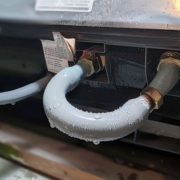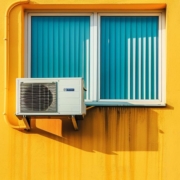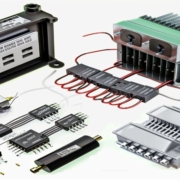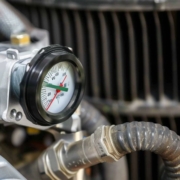How to Clean Coils on AC Unit Inside: A Comprehensive Guide
Introduction
During the sweltering summer months, your air conditioning unit is essential to maintaining a comfortable indoor environment. However, to ensure that your AC continues working efficiently, regular maintenance is key. One of the most important tasks is cleaning the coils, particularly those inside the unit. Dirty coils can severely impact the performance of your AC, leading to higher energy costs and system breakdowns. In this guide, we will walk you through the steps to effectively clean the coils on your AC unit, ensuring maximum performance and a longer lifespan.
Understanding the Importance of Clean Coils
Why Clean Coils Matter
Coils in your AC unit—both the evaporator and condenser coils—are essential components in the heat exchange process. When they become dirty, they cannot transfer heat efficiently, causing the system to work harder and consume more energy. Regular cleaning ensures that the coils function properly, saving you money on energy bills and preventing premature wear and tear.
Impact on Energy Efficiency
Dirty coils force your AC to use more energy to cool your space. When the evaporator coils are covered in dirt or debris, they can’t absorb heat as effectively, leading the system to run longer cycles. Similarly, dirty condenser coils prevent heat from being released, further taxing the system. By keeping the coils clean, your AC can work more efficiently, ultimately reducing energy consumption and lowering utility bills.
Prevention of System Breakdowns
Clogged or dirty coils contribute to the accumulation of moisture, which can lead to rust or corrosion over time. Regular cleaning prevents the buildup of grime that could block airflow and cause severe damage. This simple maintenance task can help you avoid expensive repairs or even the need for a complete system replacement.
Signs That Your Coils Need Cleaning
Reduced Cooling Performance
If your AC seems to be blowing warm air or taking longer than usual to cool your space, dirty coils may be the cause. When airflow is restricted due to dust and debris, the cooling process is compromised.
Increased Energy Bills
A sudden rise in your energy costs without an increase in usage could signal that your AC is working harder to maintain the desired temperature. Dirty coils reduce efficiency and lead to prolonged cooling cycles, consuming more energy.
Ice Formation on Coils
If you notice ice forming on the evaporator coils or inside the AC unit, it’s a clear sign of restricted airflow. This issue is often caused by a buildup of dirt and debris on the coils, which prevents proper airflow and cooling.
How to Clean Coils on AC Unit Inside
Safety Precautions
Before starting the cleaning process, always ensure that the power to the AC unit is turned off. This is crucial for your safety and to prevent damage to the unit. Additionally, wear protective gloves and eyewear to safeguard yourself from cleaning chemicals and debris.
Gather the Necessary Tools
You will need the following items to clean your AC coils effectively:
- Soft Brush: A gentle brush to remove surface debris.
- Vacuum Cleaner with a Soft Brush Attachment: To remove finer particles.
- Coil Cleaner Solution: Specially formulated for air conditioning systems.
- Spray Bottle: For rinsing the coils.
- Fin Comb: To straighten bent fins and improve airflow.
Access the Coils
Depending on your AC model, you may need to remove a panel or access cover to reach the coils. Consult your manufacturer’s instructions for guidance on how to safely access the internal components of your unit.
Brush Away Surface Debris
Using the soft brush, gently sweep away any visible dust, dirt, or debris from the coils. Be careful not to damage the fins, as they are delicate and can bend easily. Always brush in the direction of the fins to avoid causing any harm.
Vacuum the Coils
Next, use the vacuum cleaner with a soft brush attachment to gently vacuum the coils, removing smaller particles and debris that the brush couldn’t reach. Vacuuming ensures that all contaminants are removed and doesn’t push dirt deeper into the system.
Apply Coil Cleaner
Coil cleaner solutions are designed to break down stubborn dirt and grime. Dilute the coil cleaner according to the manufacturer’s instructions and spray it generously onto the coils. Let the cleaner sit for a few minutes to loosen the dirt.
Rinse the Coils
After allowing the coil cleaner to work, use the spray bottle filled with water to rinse off the cleaner and any loosened debris. Ensure that you thoroughly rinse the coils to remove all residue.
Straighten Bent Fins
During the cleaning process, you may notice some fins are bent. This can restrict airflow and reduce efficiency. Use a fin comb to carefully straighten the fins, which will help the air move freely across the coils and improve performance.
Allow the Coils to Dry
Once cleaning is complete, let the coils dry completely before restoring power to your AC unit. Allowing the coils to air dry ensures that moisture doesn’t linger, which could cause corrosion.
Conclusion
Cleaning the coils inside your AC unit is a simple yet essential task to maintain the efficiency and longevity of your system. By following these steps, you can keep your AC running smoothly, reduce energy consumption, and avoid costly repairs. Regular maintenance, including coil cleaning, helps to ensure that your air conditioner continues to keep you cool during the hottest months.
FAQs (Frequently Asked Questions)
How often should I clean the coils on my AC unit?
The coils should be cleaned at least once a year, typically before the cooling season starts. However, if you live in a dusty area or run your AC frequently, you may need to clean the coils more often.
Can I use household cleaners to clean the coils?
It’s best to use a coil cleaner specifically designed for air conditioning units. Household cleaners may be too harsh and could damage the delicate components of the system.
What if I notice mold or mildew on the coils?
If mold or mildew is present, use a mixture of water and mild detergent to clean the coils. Rinse thoroughly and allow the coils to dry completely. If the problem persists, consult an HVAC professional.
Can I clean the coils myself, or should I hire a professional?
While cleaning the coils is a manageable DIY task, if you’re unsure or uncomfortable performing the maintenance, it’s always a good idea to hire a professional HVAC technician.
Will cleaning the coils improve my AC’s cooling performance?
Yes, cleaning the coils improves heat transfer, which enhances the cooling performance of your AC and makes it more energy-efficient. A clean unit runs more smoothly and cools your space faster.










